2022 Toyota RAV4 Review | Updated with even more variety
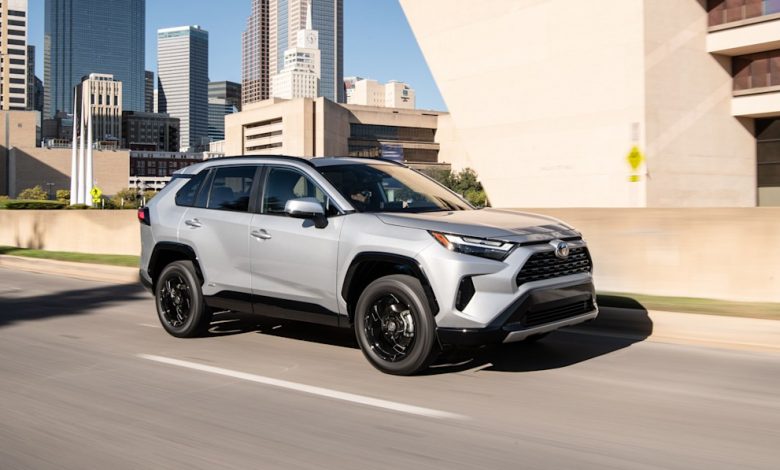
Bland, one-thing-suits-all products are old news. Variety and customization are the name of the game these days, and while the 2022 Toyota RAV4 is hardly a make-your-own, bespoke creation, it does offer an unmatched variety of models for different tastes and needs. There’s the sporty SE and XSE Hybrids, for instance, and the more ruggedly capable Adventure and TRD Off-Road. It’s also one of the rare compact SUVs that offers both hybrid and plug-in hybrid models. The latter is the 2022 Toyota RAV4 Prime, and it’s terrific.
Besides this variety, the RAV4 still delivers the nuts-and-bolts, practical requirements expected of this nameplate and the compact SUV class. Its interior space, usability, features and build quality are all above average. Fuel economy is exceptional, and the driving experience sets a nice balance between comfort and response. There’s also the matter of its sterling reliability reputation and resale value.
If there are areas where the RAV4’s variety doesn’t quite reach every corner, they’re its lack of a more invigorating engine upgrade (the Prime doesn’t quite count) and an interior that never quite reaches a premium level in appearance unlike some rivals. The styling also won’t be for everyone, but we say turning some people off is better than being bland for everyone.
Interior & technology | Passenger & cargo space | Performance & fuel economy
What it’s like to drive | Pricing & features | Crash ratings & safety features
What’s new for 2022?
There’s a new trim level for 2022. The SE Hybrid effectively gives you the sportier chassis upgrades and styling of the XSE, but with a lower price and equipment level. Updates include a new headlamp design for all trim levels but the base LE, plus new LED foglights for the XLE Premium, Limited, Adventure and TRD Off-Road. The XSE Hybrid gains the vertical LED running lights of the XSE Prime. Other updates include a new locking glove box on all trims, an eight-way power passenger seat for the Limited, and a new color, Calvary Blue.
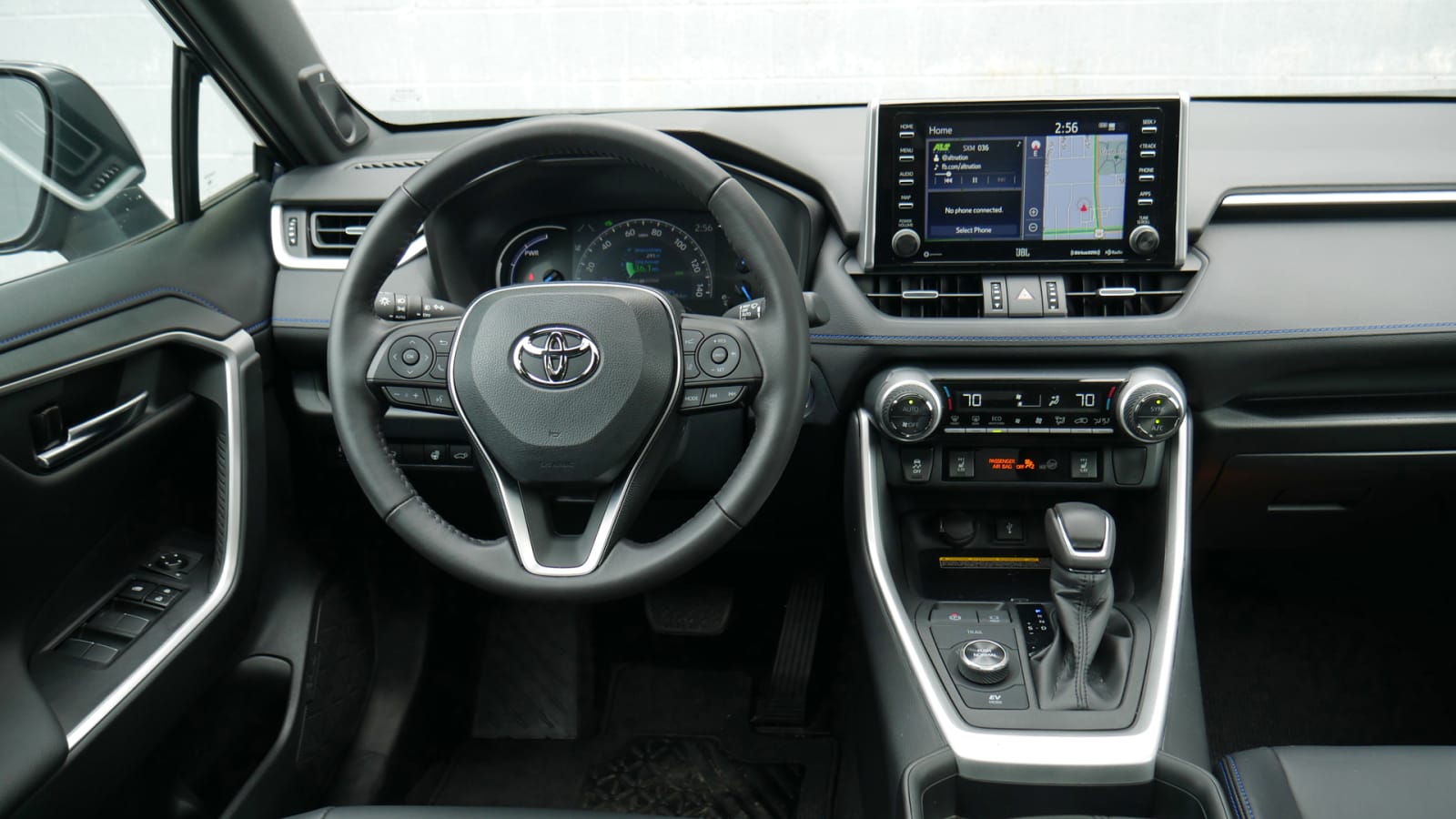
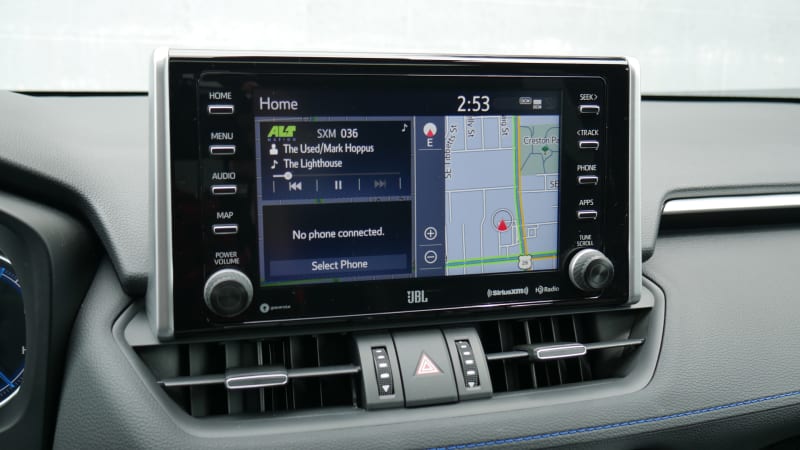
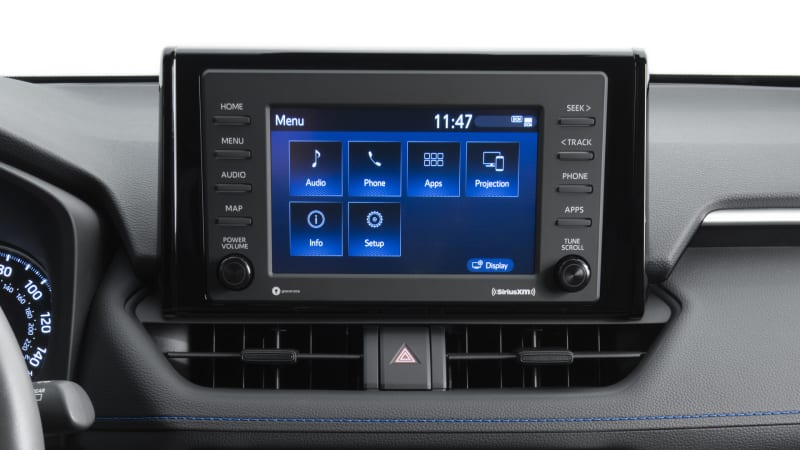
What are the RAV4 interior and in-car technology like?
Interior materials are acceptably average for the RAV4’s compact crossover class, and much better than past generations. Fit and finish are excellent. That said, the RAV4 never achieves the near-luxury vibe of a top trim level Hyundai Tucson, Nissan Rogue or Mazda CX-5. Genuine leather is not available, and the SofTex vinyl that comes on up-level models isn’t a convincing substitute. This could certainly be a problem on pricier trim levels, especially the Prime that can approach $50,000 with options. Nevertheless, we like the use of colorful trim pieces that differentiate the various models, preferring them to unconvincing fake wood or metal trim of rival SUVs. And if you are going for a more premium vibe, the Toyota Venza is basically just a fancier RAV4 Hybrid. And the new Lexus NX is one fancier step beyond that.
There are three sizes of touchscreen available: 7, 8 or 9 inches depending on trim level. They all sit high atop the dash, making them easy to see and reach. While we have not test the smallest version (pictured above right), the 8- and 9-inch units share the same basic, easy-to-operate user interface. It’s not the most modern in appearance nor quickest to operate, but many should appreciate its simplicity. Contributing to that is the inclusion of physical knobs and menu buttons.
In-car storage is better than most with large and versatile cupholders, an easily accessed spot to store and charge your phone, an under-armrest bin and unique shelves built into the dash. In the cargo area, the floor is double sided (one carpet, one easy-to-clean plastic) and the cargo cover can be hidden away below it. Neither is included with the RAV4 Prime, but we do like that it provides a spot for the cumbersome portable charge cord: it cleverly can be wrapped around a foam doughnut within the spare tire. Usually a plug-in vehicle resorts to a small briefcase-like bag that takes up cargo space.
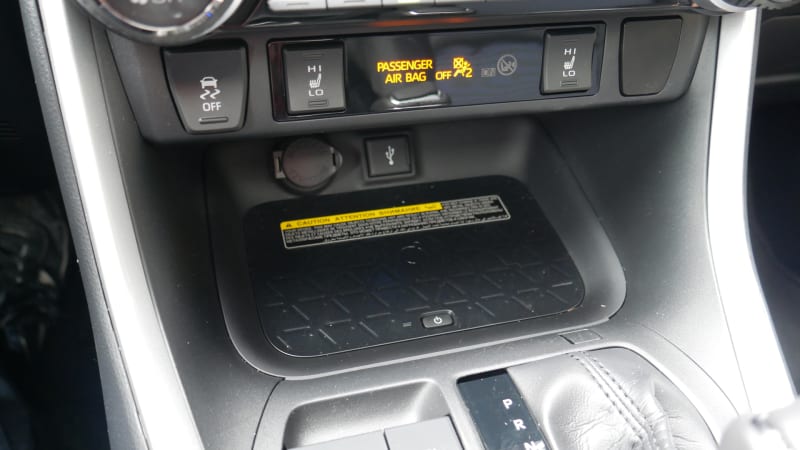

How big is the RAV4?
The 2022 RAV4 is more distinctive in appearance and model variety compared to its drab predecessors, but it does mean it sacrifices a few inches here and some cubic-feet there as a result. It’s no longer quite as uber-sensible as rivals like the Honda CR-V and Subaru Forester. The roof is lower and passengers may find things a little confining as a result, especially with the optional sunroof (the RAV4 now feels an awful lot like a miniature 4Runner). Rear seat legroom is basically mid-pack, but full-sized adults and rear-facing child seats still fit comfortably enough. The car seat LATCH anchors are very easily accessed, but are only located in the outboard positions. The CR-V has one in the center.
Cargo volume of 37.5 cubic feet with the back seats raised or 69.8 cubic feet with them folded is bigger and better than most compact crossovers, but also less than the CR-V and Tucson. This is largely the result of that lower roof and a more raked tailgate area — essentially space up in the greenhouse where you typically don’t store stuff. As a result, we found the RAV4 and CR-V could basically hold the same amount of stuff. The Tucson is then just a bit better, but the RAV4 Hybrid has an advantage over both of its competitor’s hybrids as it retains a spare tire. Now, it should be noted that the RAV4 Prime’s large battery pack raises the floor and reduces cargo space as a result (and kills the spare), but many will not notice the volume difference.
We would also be remiss if we didn’t mention the RAV4’s ample ground clearance, especially in the Adventure and TRD Off-Road trim levels, which contributes to it being one of the more capable compact SUVs off the beaten path. Only the Subaru Forester, and especially its new Wilderness model, and Jeep Cherokee Trailhawk have greater clearance than the off-road-oriented RAV4s. Even the lowest RAV4 — the XSE Hybrid — still clears 8 inches, which is better than most.
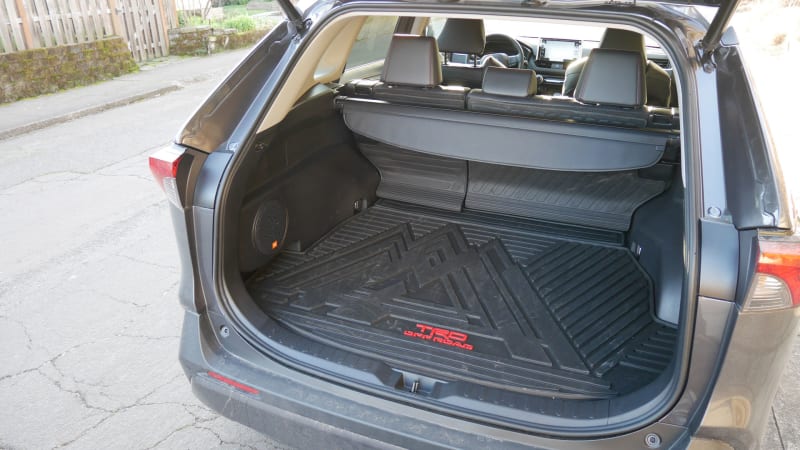
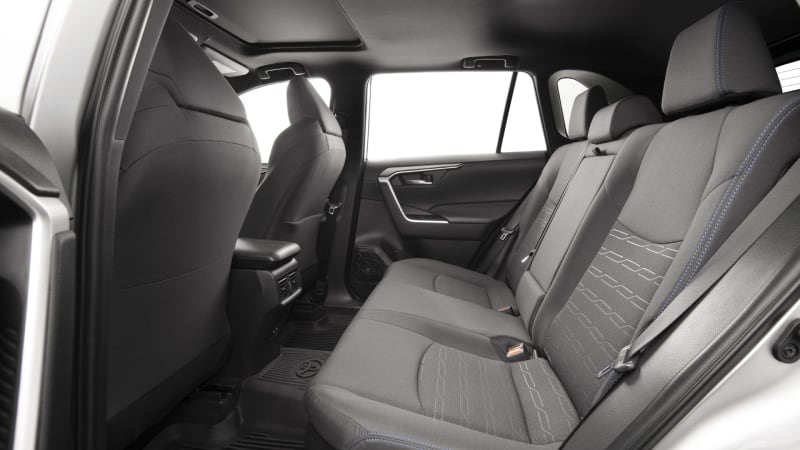
What are the RAV4 fuel economy and performance specs?
The standard RAV4 powertrain is a 2.5-liter four-cylinder good for 203 horsepower and 184 pound-feet of torque. That’s above average for the segment, but acceleration doesn’t wow, with a run from 0-60 mph taking an estimated 8.1 seconds.
An eight-speed automatic transmission and front-wheel drive are standard, while two all-wheel-drive systems are optional depending on trim level. The first is a basic reactive system that sends power to the rear wheels in the event of slippage, whereas the second available on the Adventure, TRD Off-Road and Limited trim levels more actively sends power around, including between the rear wheels to improve wet weather traction as well as dry road handling. It also includes off-road vehicle settings for “Mud & Sand,” “Rock & Dirt” and “Snow.”
EPA fuel economy estimates were not available for 2022 at the time of this writing, but we doubt they’d differ much from the final ’21 ratings. A base, front-wheel-drive RAV4 got 28 miles per gallon city, 35 mpg highway and 30 mpg combined. They’re effectively the same with the LE and XLE’s basic all-wheel drive system. The Adventure and TRD Off-Road only go down to 28 mpg combined and we managed 31.3 mpg during a 700-mile road trip in the TRD Off-Road.
The RAV4 Hybrid gets a different 2.5-liter engine along with three electric motors that combine to offer up 219 horsepower. The electric motor at the rear effectively gives the Hybrid standard all-wheel drive. Its 0-60 estimate is 7.8 seconds, meaning the Hybrid is not only a more fuel-efficient choice, but a higher performance one too (albeit barely). Fuel economy for every Hybrid trim level is 41 mpg city, 38 mpg highway and 40 mpg combined. That’s exceptional for a compact SUV, but it’s also effectively the same as what you’d get in other compact hybrid SUVs.
Finally, there’s the new RAV4 Plug-In Hybrid that has more powerful motors and a higher capacity battery pack. When fully charged, it yields 302 total system horsepower, a 0-60 time of 5.8 seconds and an EPA-estimated range of 42 miles (more than most other PHEVs). Should you exhaust the all-electric range, it basically operates like the regular hybrid and returns similar fuel economy. So, the more you use its all-electric range, the more efficient it is.
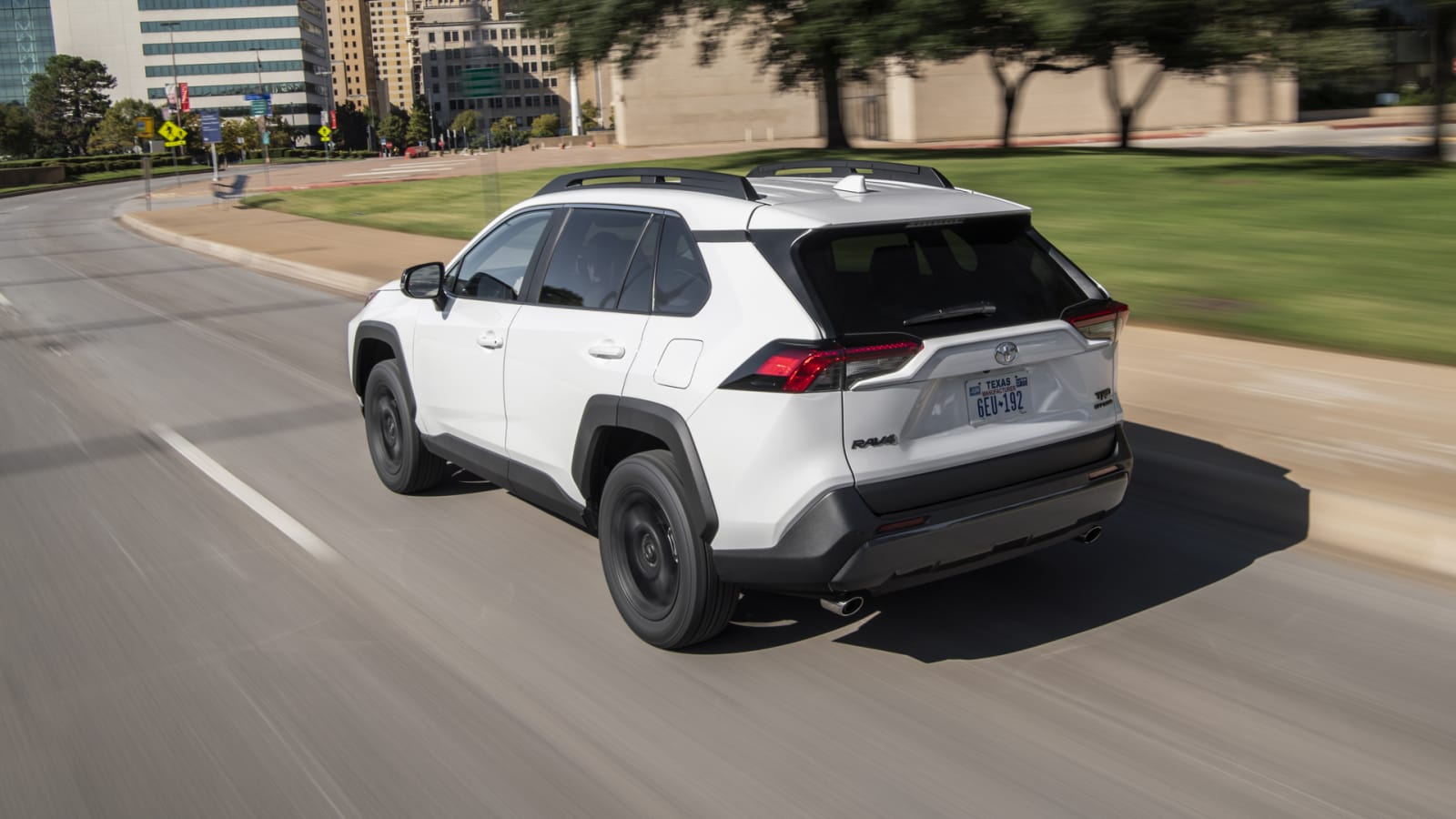
What’s the RAV4 like to drive?
The RAV4 isn’t the boring, anonymous crossover it once was. It may not engage like a Mazda CX-5, but there is still an eagerness to its turn-in and a commendable poise through corners without sacrificing ride quality. The handling capability and steering feel of the various models also isn’t vast, though the sport-tuned SE/XSE Hybrid and Prime models are certainly more adept at tackling a winding mountain road. Even the TRD Off-Road is a capable handler (pictured above), although its all-terrain tires do create a lot of road noise.
Really, the biggest difference comes down to powertrain choice. The base four-cylinder looks good on paper, but in practice, it’s merely acceptable for the segment and we found it a bit loud and buzzy. The Hybrid actually improves this, as it adds that initial kick of electric power to smooth things out. Still, prolonged acceleration reveals the typical Toyota hybrid drone. Ultimately, both of these engines are about providing good fuel economy without a penalty for drivability (there’s no throttle lag or unusual transmission programming, for instance). They succeed, but if you want more guts, you’ll have to look elsewhere.
Now, “elsewhere” could very well be the RAV4 Prime. It has 302 horsepower when the battery is fully charged and its acceleration is a strong and inspiring as its 0-60 time of 5.8 seconds would indicate. It genuinely feels like an electric car. However, that changes when that all-electric range is exhausted. Acceleration goes from inspiring to unremarkable. So, whether you’re talking performance or fuel economy, it’s best to keep the Prime charged.
What other Toyota RAV4 reviews can I read?
2021 Toyota RAV4 Prime First Drive
Our specific review of the Prime shows that a plug-in hybrid powertrain makes for a better RAV4, but a RAV4 also makes for a better plug-in hybrid.

2020 Toyota RAV4 TRD Off-Road Review
We drive (and sail!) the most off-roady version of the RAV4 on a 700-mile road trip to western Canada.
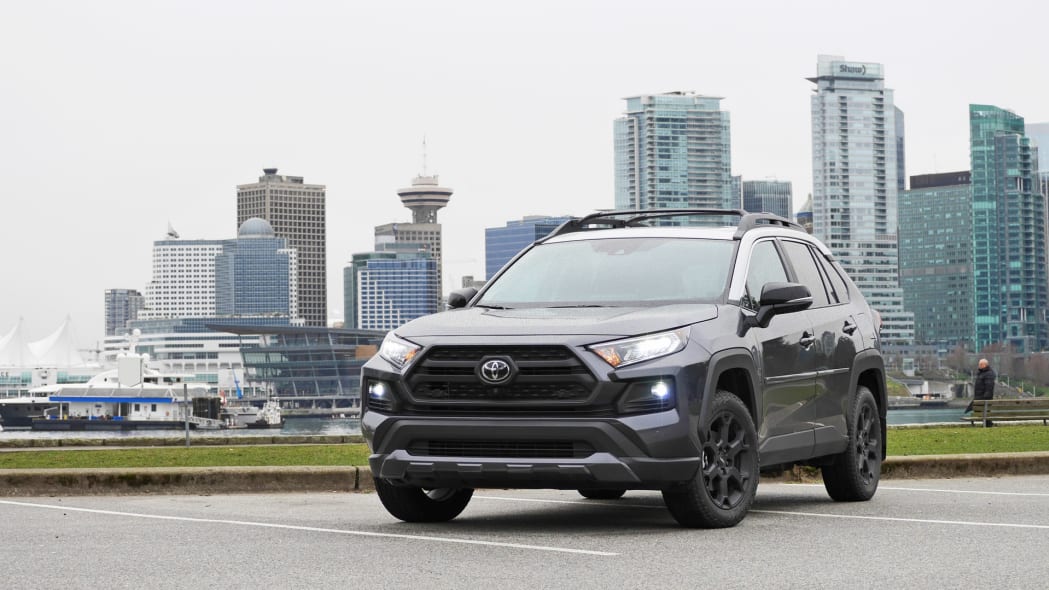
2020 Toyota RAV4 Interior Review
We dive deep into the RAV4’s interior storage, quality and technology.

Toyota RAV4 vs Honda CR-V Cargo Capacity Comparison Test
We know the numbers say the CR-V is a bit bigger, but we put the numbers to the test with actual luggage.
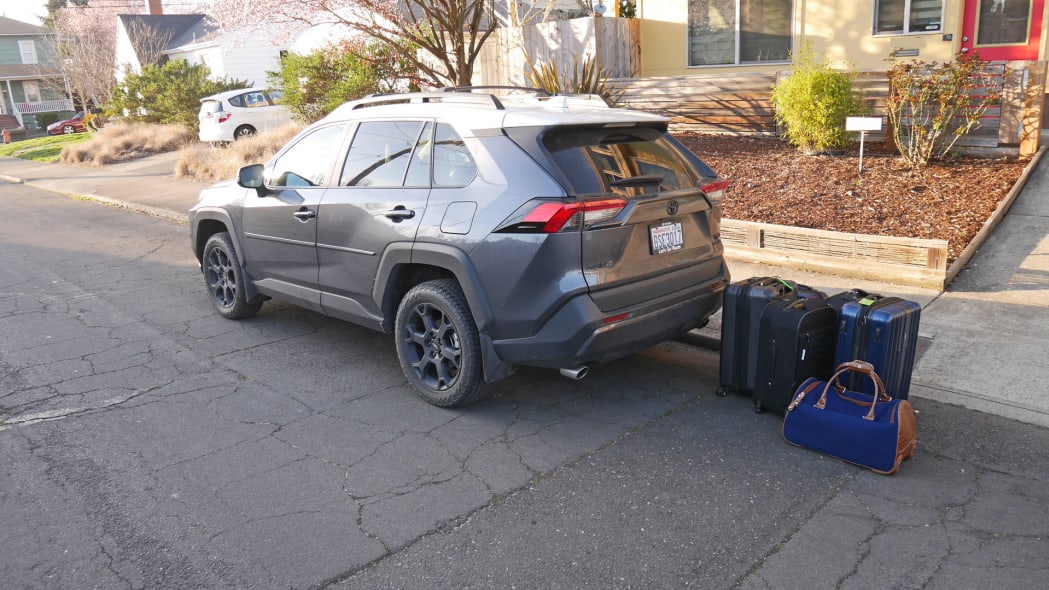
2019 Toyota RAV4 Adventure vs 2019 Subaru Forester Sport | Comparison
We try out the automotive equivalent of trail-running shoes. We take a look at their interior, their specs and what they’re like to drive. We found the Forester’s space and value compelling, but also thought the RAV4 Adventure’s style could prove to be decisive for many. Note that Subaru has since come out with the more capable Forester Wilderness.
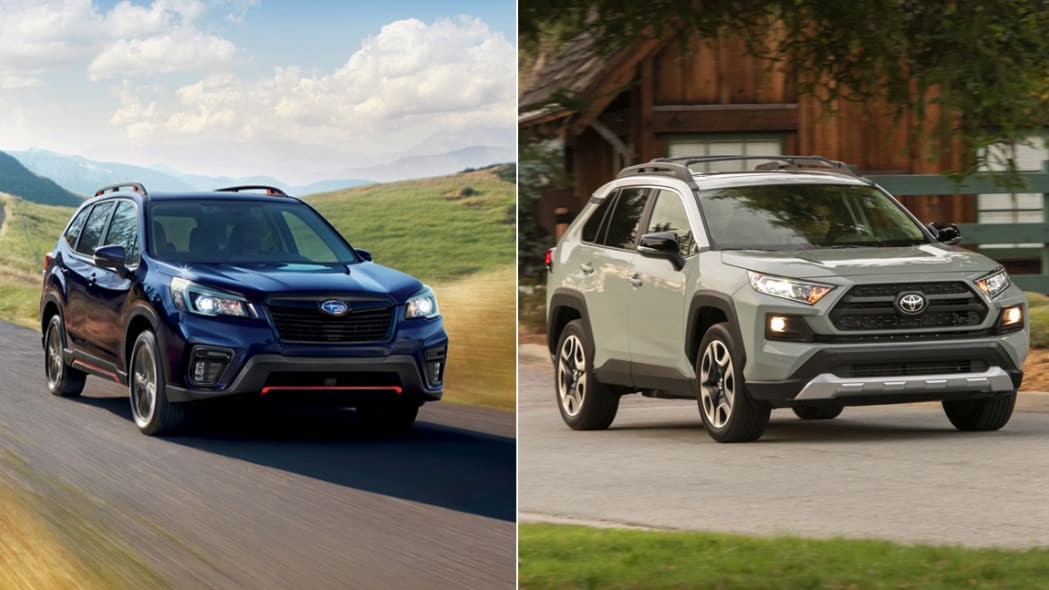
2019 Toyota RAV4 First Drive Review | Definitely not playing it safe
A comprehensive look at all the changes undergone for the current RAV4 generation, including details about its design and engineering.
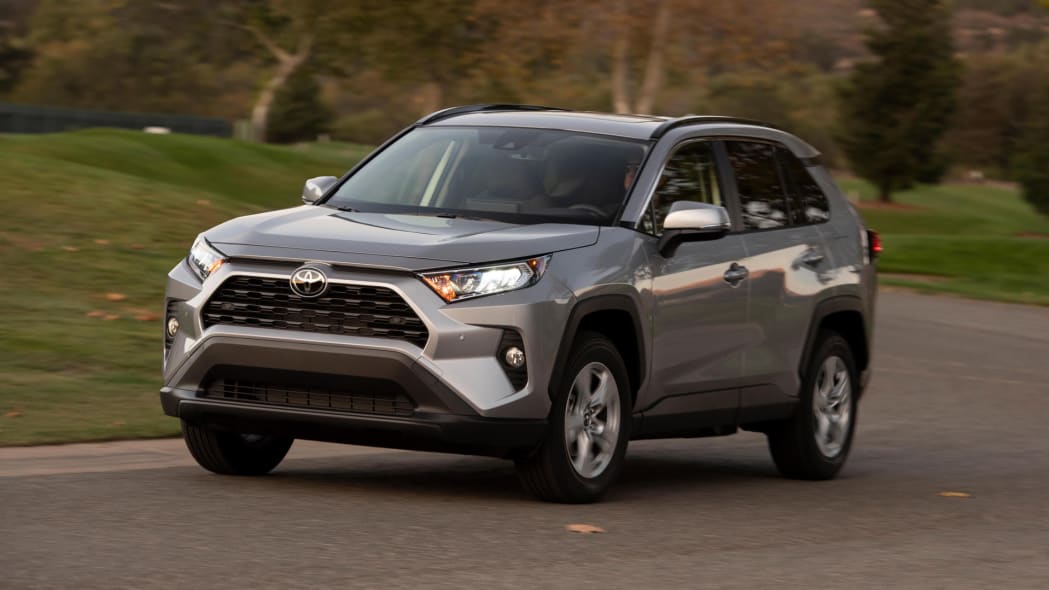
2019 Toyota RAV4 Adventure Drivers’ Notes Review | More character, more capability
Our review of the off-road-oriented Adventure trim level, which boasts additional ground clearance and chunky good looks that we prefer over the standard version.

2019 Toyota RAV4 Hybrid Drivers’ Notes Review | A wallflower no more
Our Quick Spin review of the RAV4 Hybrid, which we found is very nice to drive despite its intended role as the fuel-sipping option.
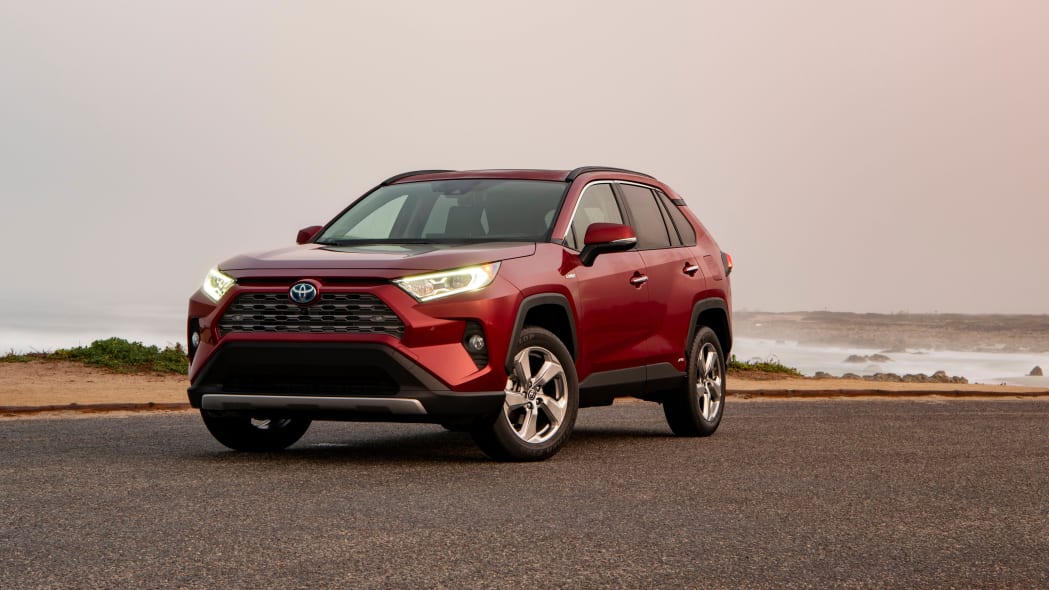
How much is the 2022 RAV4 price and what features are available?
Pricing was not available for the 2022 RAV4 at the time of this writing. There’s little reason to expect a significant bump over last year’s starting point of $27,255 for the base LE, plus $29,675 for the Hybrid LE, $34,330 for the Adventure, $36,955 for the TRD Off-Road, and $39,275 for the Prime. The latter is eligible for a $7,500 federal tax credit plus potential state credits. For those trim levels that do not come standard with all-wheel drive, it is a $1,400 option.
Standard equipment includes 17-inch steel wheels, LED headlights, roof rails, rear tinted glass, a full suite of accident avoidance tech (see Safety section), adaptive cruise control, a height-adjustable driver seat, cloth upholstery, a 60/40-split reclining and folding back seat, a 7-inch touchscreen, one USB port, Apple CarPlay, Android Auto, Amazon Alexa integration, in-car WiFi, satellite radio and a six-speaker sound system.
Besides increased equipment, the various trim levels also feature different styling, especially the SE and XSE Hybrids, Adventure, TRD Off-Road and Prime.
What are the RAV4 safety ratings and driver assistance features?
Blind-spot and rear cross-traffic warning systems are optional on the LE trim level and standard on all others. A rear cross-traffic automatic braking system is standard on the Limited and optional on all trims but the LE. It was unclear at the time of this writing whether the SE Hybrid is equipped equally to the LE apart from its chassis and styling differences.
The National Highway Traffic Safety Administration gave the RAV4 five out of five stars for overall and side crash protection, and four stars for frontal. The Insurance Institute for Highway Safety named the ’21 a Top Safety Pick for its “Good” ratings in all crash tests but the newest, more stringent IIHS side crash test where it got a second-best “Acceptable.” A hodge podge of headlight ratings could certainly change given the new-for-2022 headlights.
Related Video:




